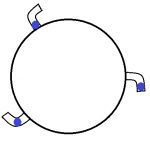- To participate in the 911Metallurgist Forums, be sure to JOIN & LOGIN
- Use Add New Topic to ask a New Question/Discussion about Crushing.
- OR Select a Topic that Interests you.
- Use Add Reply = to Reply/Participate in a Topic/Discussion (most frequent).
Using Add Reply allows you to Attach Images or PDF files and provide a more complete input.
- Use Add Comment = to comment on someone else’s Reply in an already active Topic/Discussion.
-
https://www.911metallurgist.com/wp-content/plugins/wp-symposium-pro/forums/../css/images/wait.gif
Reason for lumps formation in rotary kilns of iron pelletizing plant (6 replies and 3 comments)
Please join and login to participate and leave a comment.



Hello good time - Thank you for answering some of my questions
What do you think is the best solution to eliminate this problem?